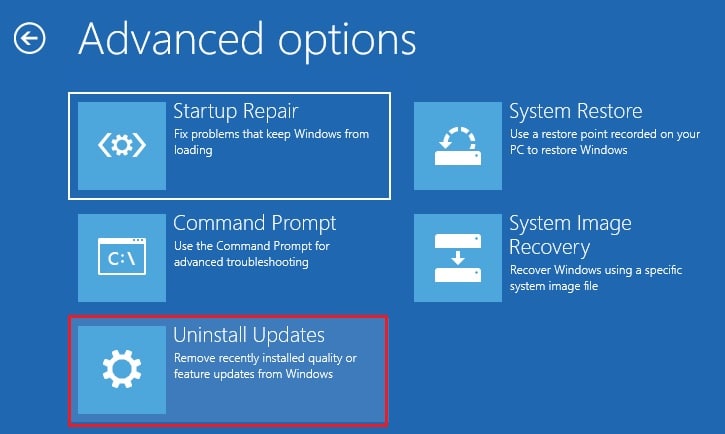If your system is unable to boot after installing the latest Windows 10 update, you will need to uninstall the Windows 10 update without booting into Windows 10.
Windows 7 had a startup option: “Boot with last known good configuration” which was highly useful if the computer could not boot to the login screen. Windows 10 is missing this feature.
If you have not enabled the System Restore feature in Windows 10, then it becomes more complex to recover the unbootable system.
If the system is unable to boot after the last Windows update, you can uninstall the update even without logging into Windows.
Keep reading and follow the steps to uninstall the update without booting into Windows.
Table of Contents
How to uninstall the update without booting into Windows 10
Without being able to access the Windows GUI, you can still uninstall the update which has caused your system to crash. The only thing you need to know is the name of the update that has affected your computer, which can be obtained as well.
Here is how you can achieve the task.
How to check the names of the installed updates through Command Prompt
Since you are unable to login to your Windows account using your credentials, you must access the Command Prompt at the very beginning. Perform the following:
- Restart your computer and then boot into the Recovery options. Press Shift + F8 at the computer startup to bring the advanced startup options.
- Once there, navigate through to the following:
Troubleshoot -> Advanced Options -> Command Prompt - In the Command Prompt, write the following command to get a list of the already installed updates:
wmic qfe list brief /format:table
Output will provide all installed Windows 10 updates as well as its installation information, such as its date. Note the name of the update from here you wish to uninstall (KBxxxxxxx).
How to uninstall the update without booting into Windows using Command Prompt
Now that you are sure of the name of the Windows update you wish to remove, follow the instructions below to remove it.
- Remain in the same Command Prompt as mentioned earlier, or navigate to it again by following the steps above.
- Now change the directory to System32 by entering the following command:
cd /d C:\Windows\System32
Note that sometimes the directory changes to D instead of C, so be sure to navigate to the correct one. You will be prompted if the directory is not correct. - Enter the following command to remove the selected update.
wusa /uninstall /kb:UpdateID
Replace UpdateID with the suffixed digits from the name of the update, as such in the example below:
You may be prompted with a Yes or No input when a restart may be required. If you wish to uninstall the update without any requirements for input, enter the following command:wusa /uninstall /KB:UpdateID /quiet
How to uninstall updates without booting into Windows using Advanced Options
Another way to uninstall the updates is very similar to the one shared above, except that there are no commands involved.
- Restart the computer and head onto the Recovery options.
- Navigate to the following location:
Troubleshoot -> Advanced Options -> Uninstall Updates
- On the next screen, select the type of feature you wish to uninstall: Quality update or Feature update. Quality updates are the ones known as cumulative updates which are released once a month. Feature updates are the ones that introduce the newer versions of Windows 10.

- On the next screen, choose the target OS. This is in case there is more than one instance of Operating Systems running on the host device.
- On the confirmation screen, click on Uninstall Update.

Once you have removed the update that caused your system to crash, reboot the computer and you should now be able to boot it up without any issues.
Closing words
Uninstalling updates is far easier when you are able to log in using your credentials. This guide is for those that are unable to boot their devices due to an enforced Windows 10 update.
If you know the name of the update you want to uninstall, it is best preferred to opt for a method that includes Command Prompt. You can also use this method to uninstall any update on Windows and not just the latest one.
